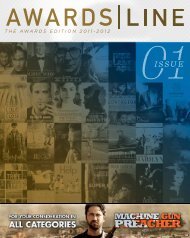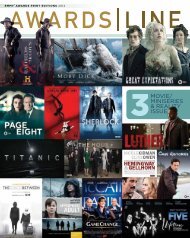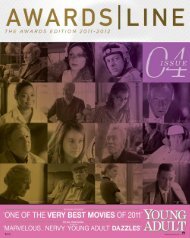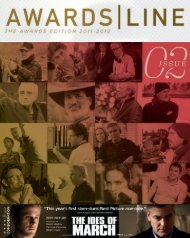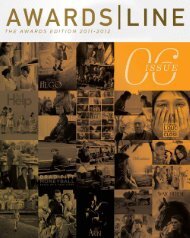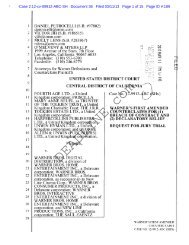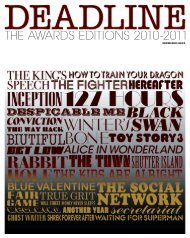Preliminary Injunction
Preliminary Injunction
Preliminary Injunction
Create successful ePaper yourself
Turn your PDF publications into a flip-book with our unique Google optimized e-Paper software.
1<br />
2<br />
3<br />
4<br />
5<br />
6<br />
7<br />
8<br />
9<br />
10<br />
11<br />
12<br />
13<br />
14<br />
15<br />
16<br />
17<br />
18<br />
19<br />
20<br />
21<br />
22<br />
23<br />
24<br />
25<br />
26<br />
27<br />
28<br />
purposes of copyright law, … the heart of any parodist’s claim to quote from<br />
existing material, is the use of some elements of a prior author’s composition to<br />
create a new one that, at least in part, comments on that author’s works.” Id. at 580<br />
(citations omitted; emphasis added). “It is this joinder of reference and ridicule<br />
that marks off the author’s choice of parody.” Id. at 583 (emphasis added). If, on<br />
the contrary, the defendant copies from the prior work “merely … to get attention<br />
or to avoid the drudgery in working up something fresh, the claim to fairness …<br />
diminishes accordingly (if it does not vanish), and other factors, like the extent of<br />
its commerciality, loom larger ....” Id. at 580.<br />
Applying these principles, the Ninth Circuit rejected a fair use defense in Dr.<br />
Seuss, which concerned a purported parody of The Cat in the Hat involving the<br />
O.J. Simpson criminal trial. The Court held the defendant’s work was not a parody<br />
because it did not comment on, criticize, or make fun of the copyrighted work:<br />
“Although The Cat NOT in the Hat! does broadly mimic Dr. Seuss’ characteristic<br />
style, it does not hold his style up to ridicule. The stanzas have ‘no critical bearing<br />
on the substance or style of’ The Cat in the Hat.” 109 F.3d at 1401 (citing<br />
Campbell, 510 U.S. at 580). Similarly, in Columbia Pictures v. Miramax Films,<br />
supra, the court rejected a parody defense because the defendants’ advertisement<br />
did not comment on or criticize the plaintiffs’ advertisement and thus did not<br />
constitute a “transformative work which alters the original with new expression,<br />
meaning, or message.” See 11 F. Supp. 2d at 1188. 11<br />
Here, the XXX Adaptation has no discernible parodic character. It does not<br />
poke fun at, ridicule, or comment on the Fifty Shades Trilogy. Rather, it faithfully<br />
11 See also Castle Rock, 150 F.3d at 142-43 (finding trivia book drawn entirely<br />
from the TV series Seinfeld was not transformative, due to a lack of alteration of<br />
the original, lack of commentary or analysis in the book, and statements on the<br />
book cover and by the author that the book was intended to “satisfy betweenepisode<br />
cravings” and to “capture Seinfeld’s flavor in quiz book fashion”); Rogers<br />
v. Koons, 960 F.2d 301, 310-11 (2d Cir. 1992) (finding it “difficult to discern any<br />
parody” in a near-exact sculptural reproduction of a photograph; “it is not really<br />
the parody flag that appellants are sailing under, but rather the flag of piracy”).<br />
-17-<br />
Memorandum ISO Plaintiff’s Motion for <strong>Preliminary</strong> <strong>Injunction</strong>




